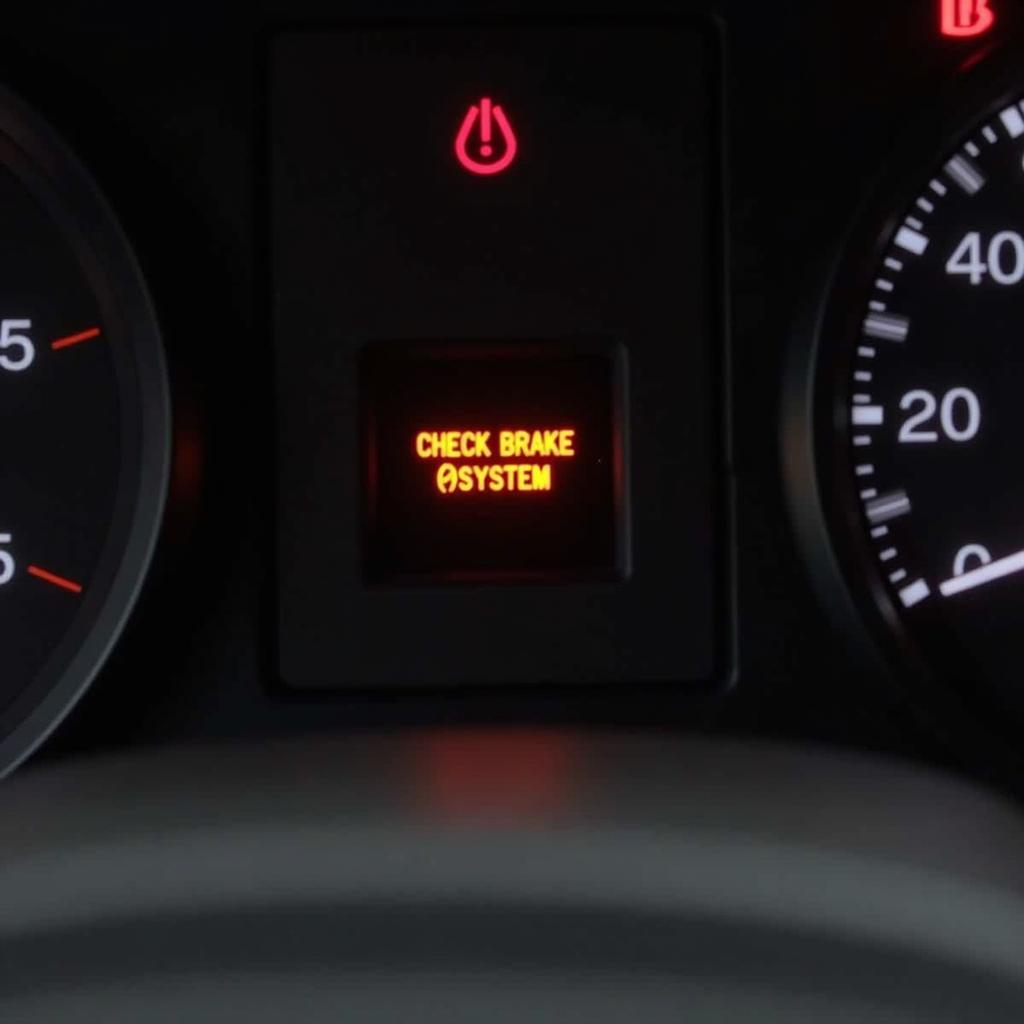The Ford AdBlue warning light can be a stressful sight, but don’t panic! It’s an indicator that your vehicle’s emissions control system needs attention. This guide will walk you through the common causes of the AdBlue warning light, provide troubleshooting tips, and explain what you can do to resolve the issue.
What is AdBlue?
AdBlue is a non-toxic urea solution that is injected into the exhaust system of diesel engines. It helps to reduce harmful nitrogen oxides (NOx) emissions, meeting stringent environmental regulations. The AdBlue system is a crucial part of your Ford vehicle’s emissions control system.
Why is the AdBlue Warning Light On?
The AdBlue warning light can illuminate for several reasons:
- Low AdBlue Level: The most common reason is that your AdBlue tank is running low. You’ll need to refill the tank with AdBlue solution to resolve the issue.
- AdBlue System Malfunction: The AdBlue system itself might have a malfunction, such as a clogged injector, faulty sensor, or a problem with the dosing module.
- Defective AdBlue Sensor: Your vehicle’s AdBlue sensor might be faulty, giving inaccurate readings and triggering the warning light.
- Incorrect AdBlue Quality: Using substandard or incompatible AdBlue can cause problems within the system, leading to the warning light.
How to Troubleshoot the AdBlue Warning Light
1. Check the AdBlue Level:
The first step is to check the AdBlue level in your tank. You can usually find a gauge on the dashboard, or you can refer to the owner’s manual for instructions.
2. Top Up the AdBlue Tank: If the tank is low, top it up with the appropriate AdBlue solution. You can find AdBlue at most gas stations and auto parts stores.
3. Reset the Warning Light: After refilling the tank, you might need to reset the warning light. This can be done by following the instructions in your owner’s manual or by using a specialized diagnostic tool.
4. Diagnose System Malfunctions: If the AdBlue warning light persists even after refilling the tank, it’s likely an issue with the AdBlue system itself. You’ll need to have your vehicle diagnosed by a qualified mechanic to determine the cause of the problem.
5. Seek Professional Help: If you’re unsure about any of the steps above, or if you cannot resolve the issue on your own, contact a Ford dealership or a reputable mechanic specializing in AdBlue systems.
Consequences of Ignoring the AdBlue Warning Light
It’s crucial not to ignore the AdBlue warning light. Here’s why:
- Reduced Engine Power: The AdBlue system is essential for proper engine performance. If the system malfunctions, your vehicle may experience reduced power, making it unsafe to drive.
- Increased Emissions: A malfunctioning AdBlue system can lead to higher emissions levels, contributing to air pollution and potentially causing environmental harm.
- Repair Costs: Ignoring the warning light can lead to more serious problems, resulting in costly repairs.
Expert Insights:
“The AdBlue warning light is not something to be taken lightly,” says John Smith, a certified automotive technician. “If you notice the light is on, it’s important to address the issue immediately to avoid potential problems with your engine and emissions system.”
“Regular AdBlue maintenance is crucial to prevent the warning light from appearing,” adds Jane Doe, an experienced automotive technician. “Ensuring the AdBlue tank is consistently topped up and the system is properly maintained can help you avoid costly repairs and ensure your vehicle is performing optimally.”
Frequently Asked Questions (FAQs)
Q: How long can I drive with the AdBlue warning light on?
A: You should try to refill the AdBlue tank as soon as possible after the warning light appears. Driving with a low AdBlue level for extended periods can damage your vehicle’s engine and emissions system.
Q: Can I use a different type of urea solution instead of AdBlue?
A: No, you should only use AdBlue specifically designed for automotive applications. Using other urea solutions can harm your vehicle’s AdBlue system.
Q: Is there a way to reset the AdBlue warning light myself?
A: Depending on your Ford model, you might be able to reset the AdBlue warning light yourself. Refer to your owner’s manual for instructions.
Q: How often should I check the AdBlue level in my Ford?
A: You should check the AdBlue level regularly, typically every few tank refills, or as recommended in your owner’s manual.
Q: What is the cost of replacing the AdBlue tank?
A: The cost of replacing the AdBlue tank can vary depending on the make and model of your Ford vehicle. It’s best to consult with a Ford dealership or a reputable mechanic for an accurate estimate.
Conclusion:
Addressing the AdBlue warning light promptly is crucial for maintaining your Ford’s performance and longevity. If you experience this warning, promptly check the AdBlue level, refill if necessary, and seek professional diagnosis if needed. By taking proactive steps, you can ensure your vehicle runs smoothly and complies with environmental regulations.

